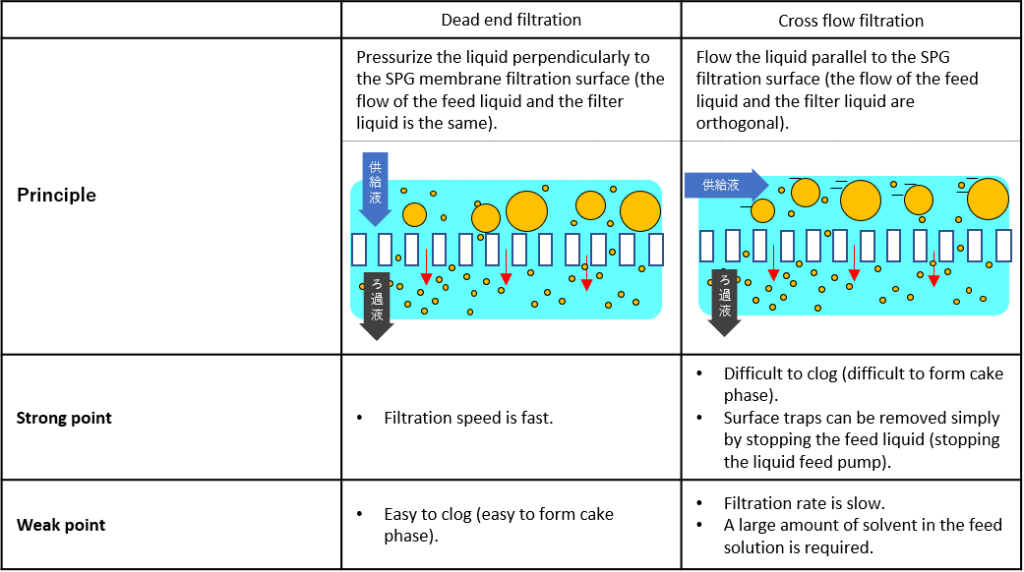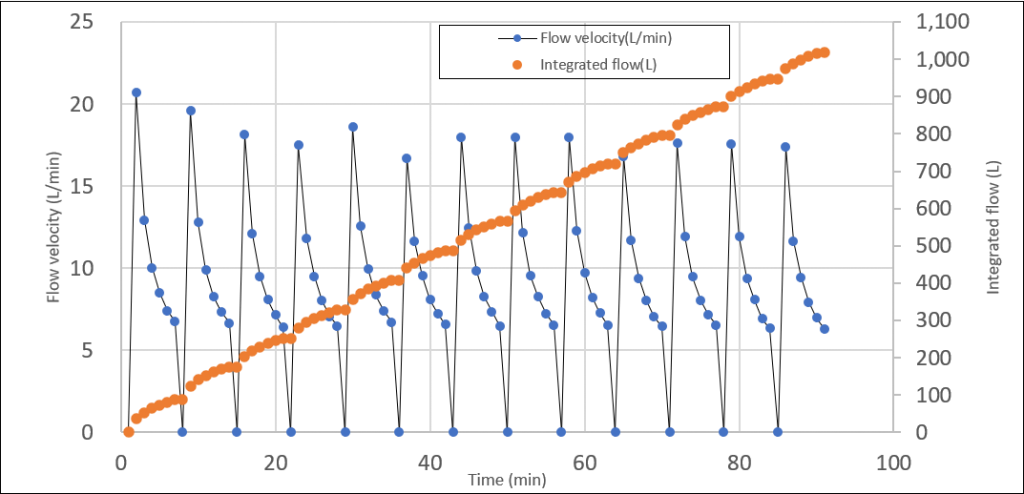SPG Filtration / Classification
about SPG Filtration / Classification
It is possible to remove fine particles in the liquid by using the narrowly distributed SPG membrane pores and to sift (classify) them, and it is compatible with “dead end filtration” and “cross flow filtration”.
Fine SPG membrane pore diameter can be selected according to the particles to be captured. By using an SPG membrane pore diameter smaller than the fine particles, the fine particles do not enter the pores and traps accumulate on the surface of the SPG membrane, so the initial filtration performance can be easily restored by backwashing.

Intermittent filtration
“Dead-end filtration” is said to be unsuitable for efficient filtration because it has a high filtration rate but clogs in a short time. However, as mentioned at the beginning of SPG filtration, by using an SPG pore size smaller than fine particles, the traps deposited on the SPG surface can be backwashed to return to the initial filtration capacity. Therefore, by repeating filtration and backwashing in a short time during dead-end filtration, extremely efficient filtration can be achieved.
The graph below shows the test results of brewer’s yeast removal performed by SPG dead-end filtration for 90 minutes. Filtration time was 6 min and backwash was repeated intermittently for 1 min. From the flow velocity graph, it can be seen that after backwashing, it has returned to a point close to the initial capacity, and from the integrated graph, it can be seen that the flow rate is increasing linearly without dropping.

